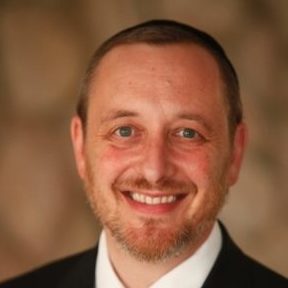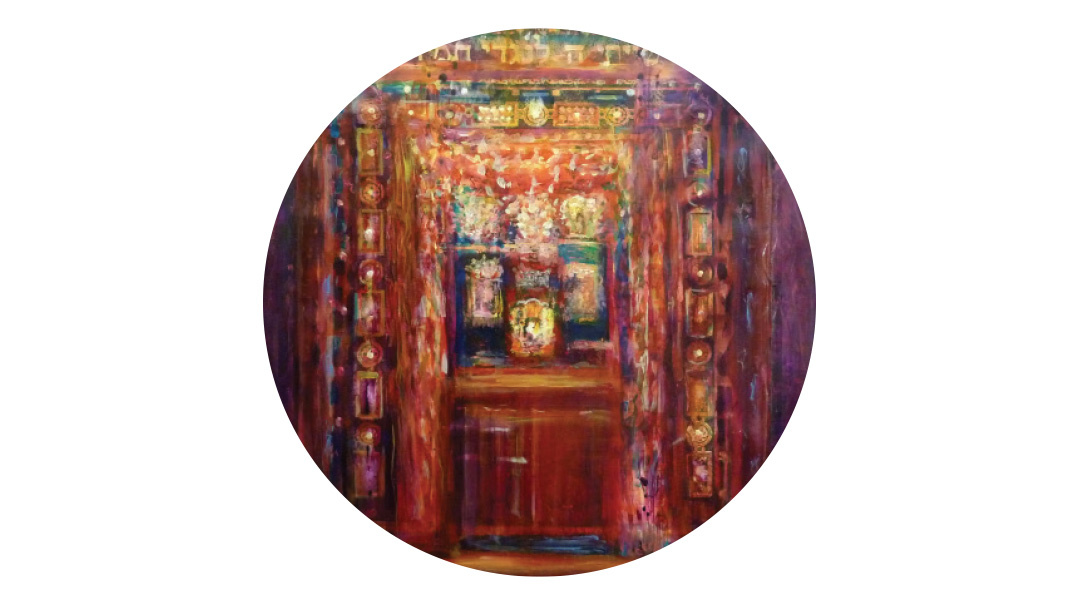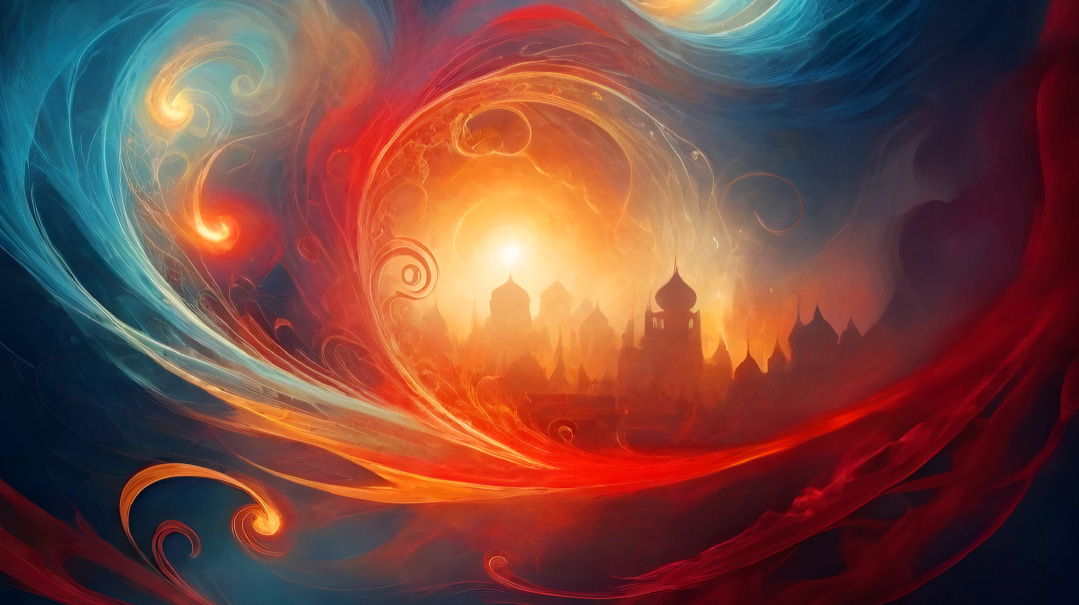Night of Tears


"B acho tivkeh balaylah — She weeps weeps in the night” (Eichah 1:2).
The Talmud (Sanhedrin 104b) relates a story of a woman who would cry bitterly at night. Rabban Gamliel her neighbor heard her weeping and would cry with her. His tears poured like a river until his eyelashes fell out.
She was crying for her deceased son. Rabban Gamliel was crying for the Churban the destruction of the Beis Hamikdash.
On Leil Tishah B’Av the Night of Tears Rav Moshe Shapira ztz”l would address us in somber tones. Every inch of the beis medrash of Yeshivas HaRan in Ramot would be packed with an audience searching for an echo of Rabban Gamliel’s tears.
Who can gauge the Rav’s motive for his Tishah B’Av shiur? Perhaps he was trying to open our eyes to the deeper dimension of aveilus so that our tears would stem from the true essence of the tragedy.
Perhaps he hoped that if we could genuinely mourn for the Churban we would as Chazal affirm merit to see the Redemption.
Please note: The following concepts are based on my understanding of the ideas my rebbi shared. I may have misunderstood them and they almost certainly do not convey the full depths of what he wanted to teach. I would like to thank the Shapira family for allowing me to share his Torah in this format.
HASHEM’S TEARS
“B’mistarim tivkeh nafshi mipnei geivah — In secret my soul cries for the pride [of Israel]” (Yirmiyahu 13:17).
The Talmud (Chagigah 5b) relates that the default of how Hashem runs His world is “oz v’chedvah bimkomo He runs the world from His makom with vigor and joy.” On Tishah B’Av however that changes. On Tishah B’Av Hashem runs His world through tears.
What does it mean that Hashem sheds tears? In simple terms if man is created in the image of G-d then the way we express ourselves parallels the way Hashem expresses Himself. If a mother expresses her grief for her deceased child through crying then Hashem can have expression in This World called “crying.” This expression found bitter fruit when the Beis Hamikdash was destroyed and Hashem’s beloved People were scattered to the four corners of the world.
In contrast our national tears stem from the Cheit Hameraglim the Sin of the Spies. On that terrible night of Tishah B’Av the Jewish people accepted the lashon hara of the Meraglim and rejected Eretz Yisrael. They spent the night crying. Hashem declared “Atem bichisem bechiyah shel chinam you wept for no reason; v’Ani ekba lachem bechiyah l’doros [on this night] I will give you reason to weep for generations” (Sanhedrin 104b).
Is there a deeper understanding of the middah k’neged middah quid pro quo of meaningful tears as a punishment for meaningless tears? Do these tears in any way connect to the tears of Hashem?
WEEPING AT NIGHT
Why do we cry?
Animals don’t cry (sorry to disappoint admirers of crocodiles but the tears they appear to shed when consuming their prey are for lubricative purposes and have nothing to do with empathy or regret). Hashem created humankind in a way that we express sadness by secreting a salty liquid that clouds our vision. Why?
There’s a well-established principal that the structure and nature of our physical form parallels our inner spiritual selves. Hashem created our external structure as an indicator as to what’s happening to us on a deeper level. When our lives follow a healthy happy routine and suddenly tragedy strikes our inner selves are confused and we experience an existential feeling of dead end. At the loss of a child lo aleinu our world closes in on us and we just cannot move on. Tears blur our vision. They both reflect and express our inner paralysis.
Further our tears are accompanied with sobbing. Our normal interaction with the outside world is through speech. When we cry that portal is closed.
The journey of our lives is traveled through the means of both vision and dialogue. In normal times we see what needs fixing and improving. We express ourselves and listen to others. Society interacts to make the world more beautiful more prosperous and ultimately at the end of the road bring it to perfection.
When we face calamity our journey comes to a grinding halt. We cannot see and we cannot speak. That is the world of tears. That is the world of Churban.
Rav Moshe would often say that everything we need to know about Yiddishkeit can be found in Lashon Kodesh. So bechi (crying) shares a root with mevuchah which means confusion and impasse. Dimah (tears) is associated with dema which means (in Mishnaic context) mixture and lack of clarity.
Where in our daily lives do we have a taste of the world of churban? The answer is found at night. When all natural and manufactured light is removed our world becomes dark. Within that cavern of blackness there is no sense of time or space. The world is disconnected from metziyus from a sense of reality. The wolves howl. We feel vulnerable and afraid. We cannot see and we cannot speak.
We are in the world of churban.
Once again the Hebrew language says it all. Erev (evening) shares a root with me’urav which means mixed up. Choshech (darkness) is associated with lachsoch which means withdrawn and disconnected. Laylah (night) is associated with yelalah which means sobbing and howling. Boker (morning) is a return to bikoret which means discernible and clear.
We now understand why our opening story took place at night. Rabban Gamliel heard a mother weeping for her dead child. The essence of night parallels the hopeless world of tears and sobs. This invoked in Rabban Gamliel feelings for the ultimate loss of life “beis chayeinu ” the house that breathed true life into the universe.
TEARS FOR GENERATIONS
Let us now return to how Hashem runs His world. The default is light clarity and happiness. In Creation the pesukim repeatedly express “Vayomer… vayar ki tov And He spoke… and He saw that it was good.” Hashem’s verbal and visual expressions became the majesty and grandeur of His universe.
The centerpiece and goal of everything He created was Eretz Yisrael. It is the perfect land the place where physicality and spirituality are in natural harmony. It is the zenith of all visual and verbal expression.
When we rejected the Land of Israel we brought on ourselves a catastrophe that plunged us into the darkness of laylah night. Our verbal and visual expressions were sealed. A meaningless tragedy. This is the essence of bechiyah shel chinam.
For Hashem the fateful night of Tishah B’Av sowed the seeds of all churban. Hashem kivayachol had to switch the way He runs His world from oz v’chedvah to b’mistarim tivkeh nafshi. From joy to tears. From dignity for His people to conceit for his enemies. From a world filled with light and clarity to a world in perpetual darkness.
We now understand a deeper level of “V’ani ekba lachem bechiyah l’doros.” When Hashem determined that night as the Night of Tears He was describing the new reality. It was the consequence of their actions.
For us Hashem’s decree invoked a feeling that both increased the pain yet offers the ultimate consolation.
There is hope.
We are in this together.
THE ENCOUNTER OF TEARS
“Kara alai moed — Declare [this day as] a moed” (Eichah 1:15).
What consolation is there in knowing that Hashem is also crying?
The Talmud (Taanis 29a) learns from the phrase in Eichah “Kara alai moed” that Tishah B’av is called a moed. The word moed implies a festival and indeed on Tishah B’Av Tachanun is not recited.
If anything Tishah B’Av appears to be an anti-festival. Why the use of this term? The word moed means an encounter. Maharsha (Bechoros 8b) says it most eloquently. The 22-day journey of mourning that starts on Shivah Asar B’Tammuz climaxes on Tishah B’Av. This is an exact parallel of the 22-day journey of celebration that starts on Rosh Hashanah and climaxes on Shemini Atzeres. Chazal famously describe Shemini Atzeres as an intimate closeness between Hashem and His people. The rest of the world has gone. “Ani v’atem nismach yachad — You and I will rejoice together.”
Tishah B’Av as well is an intimate encounter between Hashem and his people. The rest of the world has gone. You and I will cry together.
Tishah B’Av is indeed a moed. An encounter of tears.
The Gemara tells us that all Gates of Prayer are locked except the Gate of Tears (Bava Metzia 59a). When we have internalized that every day the “curse is deeper than the previous day ” our only expression left is tears from the depths of our hearts. Those tears act as acid on the Heavenly Gates.
The encounter of Tishah B’Av challenges us to shed the tears of Rabban Gamliel and recognize that we are drowning in a world of sheker death and darkness. It forces us to focus on the Bayis that we lost that was the conduit of all verbal and visual expression of emes life and light.
When both Hashem and we are together saturated with tears we can finally find nechamah true consolation. When it cannot get any darker there is only one direction in which the world can go.
Through those tears we can reach the thick darkness of night that heralds the coming dawn. We can bring the man who will rebuild the Beis Hamikdash and remove tears from the world forever. He will fulfill the prophesy of Zecharyah (8:19) and turn around the moed of tears and reveal it as the moed of everlasting joy.
On Tishah B’Av Mashiach is born.
In Real Life: The Traffic Light Siyum
Rav Moshe davened haneitz at the Kosel for 14 years until about four years ago when he became too weak to travel. I asked his driver Rav Tzvi Klebanow to share his experience:
“When Rav Beinish [Finkel Rosh Yeshivah of the Mir] passed away the minyan he started after the Six Day War warmly known as “Reb Beinish’s minyan” quickly became known as “Rav Moshe Shapira’s minyan.” Everyone felt uplifted just to be able to daven with him. If anyone urgently needed to speak to him catching him at his minyan was the easy solution.
“The Rav didn’t sleep much in general. He would often go to sleep after 2:00 am and I was there to pick him up at 4:30 am. He was very passionate about davening at the Kosel.
“People often asked him if it was a segulah to daven at the Kosel. What if they had better kavanah elsewhere? He would tell them to daven where their kavanah was best and then go to the Kosel and say Tehillim.
“Occasionally bochurim would ask him if they should accept “chumros” in order to reach higher levels of spirituality. He would say “tiheye normali ” just be normal!
“I kept a gemara and a flashlight in the glove compartment. I would pick up Rav Moshe and he would take out the gemara. Every time we came to a traffic light the Rav would read another few lines. In this way we finished eight masechtos! The Rav chose to make the siyumim on Purim with our minyan. He thought it was important for everyone to see what can be accomplished with proper use of spare moments. Everyone looked forward to the siyumim.
“Sadly it all ended on the 37th daf of Maseches Sotah.”
In Real Life: Precious Prayers
Rav Benzion Kermaier relates that Rav Moshe once davened a particularly long Minchah at the Kosel. Many minyanim came and went. When Rav Moshe took three steps back from the corner of his eye he noticed a disturbing scene unfold.
A young man without much background in Yiddishkeit was attempting chazaras hashatz. His reading skills were poor and as he slowly stumbled through the words he made mistake after mistake. The grumblings of the tzibbur reached boiling point and they unceremoniously replaced him midsentence with “one of the chevreh.”
When Rav Moshe finally finished davening he saw the young man sitting despondent at the back of the Kosel plaza. Rav Moshe sat next to him and put his arm around him.
“They say I’m a big rabbi so I want you to listen to me ” he said lovingly.
“You should know that in Heaven the prayers you just said were exceedingly precious. Hashem appreciates them more than you can ever imagine.”
Then he paused and said with a sigh “I am asking you to find a place in your heart to forgive them for the way they treated you.”
In Real Life: Fusion of Chesed and Tefillah
Rav Moshe was fond of relating a story he heard from his father-in-law Rav Aharon Bialostosky who heard it directly from the Chofetz Chaim during Seudah Shlishis. The Chofetz Chaim said this story had special meaning to him because it combined two sublime forces love of a fellow Jew and the power of tears.
The sun was setting on the Galician town of Kalush. It was the time of raava d’raava the holiest time of the holiest day of the week. A “poshuter yid” (simple Jew) was clutching his tear-drenched Tehillim sobbing uncontrollably. Another “poshuter yid” was observing this stirring scene and it touched his heart. This Jew is clearly in deep pain. Maybe I can help him?
“Reb Yid I don’t know who you are but I can see you are in distress share your tzaar with another Jew. Who knows what will come out of it?”
“Oy! I doubt you can help. I have a wonderful daughter at home with “aleh maalos” and no money to help her get married. The years are going by and my financial situation is not improving. I can’t bear to watch her getting older. All I have to lean on is our Father in Heaven.”
The caring Jew thought for a moment and said “Look Baruch Hashem money is not my problem. I have a son who is a fine yeshivah bochur. What do we have to lose? Let’s redt the shidduch here and now!”
That moment said the Chofetz Chaim was a moment of sublime holiness. It was the fusion of chesed and tefillah and everything that is beautiful about “poshuter yidden.” From that zivug five sons were born who would shake the Torah world to its core. Two of them are traditionally referred to by their classic seforim whose penetrating questions and analysis form an essential heartbeat of every beis medrash.
They are the Ketzos Hachoshen and the Kuntras Hasfeikos.
[Authors disclaimer: As a descendant of the Kuntras Hasfeikos this story has particular poignancy. Without that holy moment I would not be writing this article!] (Originally featured in Family First Issue 552)
Oops! We could not locate your form.







